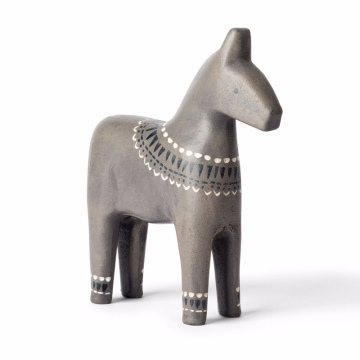Introduction to Spanish Cuisine
Spanish cuisine is a vibrant tapestry woven from a rich history and diverse cultural influences, showcasing the country's regional diversity and culinary traditions. At its core, Spanish food is characterized by its reliance on fresh, local ingredients, which are central to the preparation of countless dishes. Outside of the traditional ingredients, the geographical variety spanning from coastal regions to mountainous areas profoundly affects the culinary landscape.
Historically, Spain has been shaped by various civilizations, including the Romans, Moors, and Celts. Each culture has left its mark on the Spanish food repertoire, infusing it with a mixture of flavors, spices, and cooking techniques. For instance, the integration of spices such as saffron and cumin can be traced back to the Moorish influence, while the abundance of seafood reflects Spain’s extensive coastline. Furthermore, regions have developed distinct culinary practices, like the use of rice in Valencia for its renowned paella, or the emphasis on cured meats and cheeses in regions such as Andalusia.
Another defining feature of Spanish cuisine is the importance placed on tradition, which remains pivotal even in contemporary cooking. Although many chefs embrace modern culinary techniques and innovations, they often do so while respecting the traditional foundations of Spanish food. This balancing act between preserving heritage and adapting to new culinary trends creates a dynamic food culture that continually evolves while honoring its past.
As we embark on our culinary tour of Spain, it becomes evident that the unique flavors found across various regions offer a taste of the country's identity. From tapas to elaborate feasts, Spanish cuisine invites exploration and appreciation for its deep-rooted traditions and innovative spirit. Prepare to discover the extraordinary gastronomic journey that Spanish food has to offer, where every bite carries with it a story of the land and its people.
Regional Delicacies: A Journey Through Spain
Spain, a country celebrated for its vibrant culture, is also renowned for its rich and diverse culinary landscape, which varies significantly from region to region. Each area boasts its own distinctive flavors, ingredients, and cooking techniques. One of the most emblematic regions is Andalusia, famous for its tapas. These small plates of food allow for a variety of flavors in one meal, showcasing ingredients like olives, seafood, and cured meats. A traditional dish from this region is gazpacho, a refreshing cold soup made from fresh tomatoes, garlic, and bread, perfect for the hot climate.
Moving northeast, Catalonia presents an entirely different gastronomic experience. Here, the culinary highlights include dishes such as pan con tomate, a simple yet delightful combination of ripe tomatoes, bread, and olive oil. Another signature dish is Escudella i Carn d'Olla, a hearty meat stew that reflects the agricultural richness of the region. The use of fresh vegetables and local meats showcases the Catalan commitment to seasonal cooking and quality ingredients.
The Basque Country offers its own unique approach to cuisine, particularly with the popular pintxos. These small snacks are often skewered with a toothpick, featuring a variety of toppings such as anchovies, peppers, and cheeses, typically served in bars throughout the region. Additionally, Basque cuisine is known for its grilled fish and seafood, highlighting the proximity to the Atlantic Ocean, with dishes like bacalao al pil-pil illustrating traditional cooking methods.
Each region of Spain presents a unique culinary identity enriched by local resources and traditions. The intricate ties between geography and gastronomy create an evolving tapestry of flavors that not only define the Spanish palate but also foster a sense of community, history, and cultural pride through shared culinary practices.
The Art of Tapas: Small Plates, Big Flavors
Tapas, the quintessential small plates of Spanish cuisine, represent more than just food; they embody a vibrant cultural tradition deeply rooted in Spanish social life. These delightful dishes are often enjoyed in a communal setting, encouraging conversation and interaction, making them a cornerstone of dining customs across Spain. In essence, tapas create an inviting atmosphere where patrons gather to savor a variety of flavors while sharing stories and experiences, fostering connections among friends and families.
Traditional tapas may include options such as patatas bravas, a dish of fried potatoes served with a spicy tomato sauce, and tortilla española, a classic Spanish omelet made with potatoes and onions. Additionally, one can find marinated olives, chorizo al vino, and seafood dishes featuring calamari or anchovies gracing tapas menus throughout the country. In recent years, chefs have embraced modern interpretations, infusing creativity into classic dishes with contemporary twists, such as vegan options and international influences, appealing to a broader audience.
Etiquette plays an essential role in the tapas dining experience. It is customary to order several plates to share among the party, allowing each guest to enjoy a variety of tastes. The joy of exploring different flavors is central to the tapas experience. Furthermore, the selection of beverages enhances the overall enjoyment; traditional pairings often include Spanish wines such as Rioja or Albariño, but one may also find local beers or refreshing beverages like sangria complementing the fare perfectly.
In summary, the art of tapas transcends mere dining, embodying a rich cultural essence that reflects Spain's social life. The diversity of flavors and dishes allows diners to experience a culinary journey that is both satisfying and communal, highlighting the importance of sharing in the art of dining. Through its small plates, Spain showcases big flavors that resonate with all who partake in this time-honored tradition.
Desserts and Sweets: A Sweet Finish
Spain is renowned for its vibrant and diverse culinary heritage, and the country's desserts and sweets play a significant role in this gastronomic landscape. Among the most popular desserts are flan, churros, and tarta de Santiago, each with its own unique origins and variations that reflect the regional ingredients and traditions of Spain. Flan, a creamy caramel custard, is a beloved dessert often enjoyed after meals. Its smooth texture and sweet, caramelized topping make it a comforting choice, perfect for family gatherings or special occasions. The dessert is also a common feature in restaurants throughout the country, where it is often homemade, highlighting the importance of local recipes.
Churros, on the other hand, are a delightful treat frequently enjoyed at breakfast or as a snack. These fried dough pastries are known for their crispy exterior and soft interior and are traditionally served with a cup of thick hot chocolate for dipping. The origins of churros are said to trace back to Spanish shepherds who first created them as a portable food option. Over the years, churros have evolved, and variations can now be found across different regions, some stuffed with creamy fillings or sprinkled with sugar and cinnamon.
Tarta de Santiago, originating from the region of Galicia, is an almond cake inscribed with the cross of Saint James. This dessert is typically served during celebrations and religious festivities, marking its cultural significance. Traditional ingredients such as almond flour, eggs, and sugar create a simple yet flavorful dessert that resonates with those looking to explore the authentic flavors of Spain.
To recreate these sweets at home, one should focus on using quality ingredients, as this greatly influences the final product. Emphasizing authenticity while experimenting with local variations can lead to delightful outcomes. As Spanish sweets continue to enchant, they remain a cherished aspect of the culinary experience in Spain, bringing joy to both locals and visitors alike.








